“In a pickle” appears in The Tempest (Act 5, scene 1) Shakespeare; a related form appears in Antony and Cleopatra (Act 2, scene 5). Thomas Tusser (an English farmer and poet) had advised, in 1573, that the husbandman “Reap barley with sickle, that lies in ill pickle.”
Preserving food is as much an art form as it is a scientific theory that has been ingrained in our food heritage. The need to preserve food when it is in abundance by treating and handling it to stop or slow down spoilage and thus allow for longer storage, mankind has been experimenting with natural pickles as a way to preserve food for out-of-season use and for long journeys, especially by sea. Salt pork and salt beef were common staples for sailors before the days of steam engines.
Some foo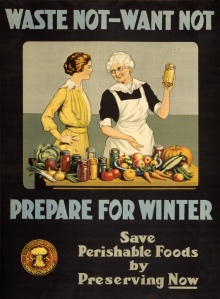 d historians and writers suggest that the process of pickling can be traced back to Ancient Egypt. It is said that in 5th century B.C. the Babylonians and Egyptians pickled fish such as sturgeon, salmon, and catfish, as well as poultry and geese.
d historians and writers suggest that the process of pickling can be traced back to Ancient Egypt. It is said that in 5th century B.C. the Babylonians and Egyptians pickled fish such as sturgeon, salmon, and catfish, as well as poultry and geese.
Pickling of cucumbers dates back to about 3000 years ago, and has its origins in the Indian sub-continent. India has a large variety of pickles (known as Achaar in Punjabi, Urdu and Hindi, which are mainly made from mango, lime, Indian gooseberry (Anwla), chilli, vegetables, ginger, garlic and lemon. These fruits/vegetables are generally mixed with other pickling ingredients such as salt, spices, and vegetable oils to mature. Any Punjabi will tell you that a stuffed paratha and fiery achaar (pickle) washed down by a ice-cold glass of buttermilk lassi is the ultimate ‘Desi Brunch’!
 Closer to home medieval cooks used salt, vinegars, spices and sugar to preserve all kinds of foods, developing their skills and enhancing their knowledge overtime. These techniques are prevalent in today’s vast array of pickles and pickling products on the market.
Closer to home medieval cooks used salt, vinegars, spices and sugar to preserve all kinds of foods, developing their skills and enhancing their knowledge overtime. These techniques are prevalent in today’s vast array of pickles and pickling products on the market.
Pickling food in vinegar is a great way to augment its taste, and is a marvelous way to celebrate the bounty of late summer British produce available. Over time traditional pickles, such as piccalilli have become the ideal accompaniment with cured meats and fish, pies, cheeses, or as part of a Ploughman’s lunch platter. Whilst developing a retro come nostalgic menu concept in Islington, my mentor handed me down a traditional recipe for piccalilli. I had never really been big into pickling foods myself, and intertwined with a hectic work schedule, I was reluctant to try it out at all, not to mention the onions and the sack full of walnuts he wanted me to pickle as well.
I’ve always been quite partial to a hearty Ploughman’s lunch, which tells a novel tale of our national and regional food traditions. Unfortunately, most Ploughman’s lunches on offer in pubs and restaurants these days are a sad pale imitation of the real ‘McCoy’ – Back in the day no self respecting ploughman would have touched a toasted ciabatta with olives, thin camembert slices and a limp garnish of seasonal salad. A traditional Ploughman’s lunch had to be robust and full of gusto, if it were to be a substantial lunch for a ploughman to work the fields with all day.
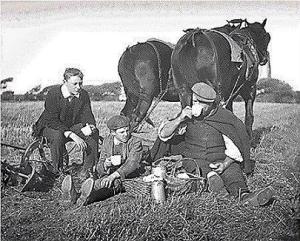 ‘Ploughman’s Lunch’ as we understand it today is actually a term promoted by the trade organisations English Cheese and the Milk Marketing Board in the 1960’s as part of an advertising campaign to boost the amount of cheese being sold in pub lunches. I doubt the romantic notions of a hardworking handsome looking ploughman armed with a cheese knife, wooden board and Gingham table cloth enjoying a leisurely lunch under a tree in the meadows with the sun gleaming in his eyes was a regular occurrence…nice idea though.
‘Ploughman’s Lunch’ as we understand it today is actually a term promoted by the trade organisations English Cheese and the Milk Marketing Board in the 1960’s as part of an advertising campaign to boost the amount of cheese being sold in pub lunches. I doubt the romantic notions of a hardworking handsome looking ploughman armed with a cheese knife, wooden board and Gingham table cloth enjoying a leisurely lunch under a tree in the meadows with the sun gleaming in his eyes was a regular occurrence…nice idea though.
The earliest reference of the word Ploughman’s dates back to is 1837, and in later references food writers and authors say ‘There’s a pub quite close to where I live where … all you need say is, ‘Ploughboy’s Lunch, Harry, please’. And in a matter of minutes and a shilling later a tray is handed across the counter to you on which is a good square hunk of bread, a lump of butter and a wedge of cheese, and pickled onions, along with your pint of beer.
There are no set rules or formulae as for what components go into making up a Ploughman’s lunch, but a few core items are essential to stay true to the testament of our ‘English icon’ – Culture24, part of the Department for Culture, Media and Sport.
 A traditional Ploughman’s lunch will usually include a huge chunk of strong local hard cheese, a handful of crisp pickled onions, a fresh tomato, fresh butter and a thumping great hunk of fresh bread. The meats and accompaniments may vary depending on seasonality and availability of produce, and which region you are in, but it would not be uncommon to find a slice of pate or pork pie, apples or pears, and an assortment of homemade pickles, chutneys and relishes.
A traditional Ploughman’s lunch will usually include a huge chunk of strong local hard cheese, a handful of crisp pickled onions, a fresh tomato, fresh butter and a thumping great hunk of fresh bread. The meats and accompaniments may vary depending on seasonality and availability of produce, and which region you are in, but it would not be uncommon to find a slice of pate or pork pie, apples or pears, and an assortment of homemade pickles, chutneys and relishes.
With the sunny weather we’ve been having recently, I can’t think of anything better than a weekend away from the big smoke, in the country with a traditional Ploughman’s lunch, a bottomless jar of homemade piccalilli and a refreshing pint of local pale ale or cider. Apart from being a great way to enjoy a leisurely lunch on a glorious summer’s day, there is something quintessentially English about the whole affair.
I did make the piccalilli in the end, and found that it opened up a whole new world of pickling for me, and it wasn’t long before I pickled those onions as well. I found that making pickles can be very rewarding, and just tasted better and better as they mature over time. I never really did get round to doing those walnuts…which ended up with me getting in a right pickle!
Homemade Piccalilli
450g salt + 4.5 litres of water, bring to the boil
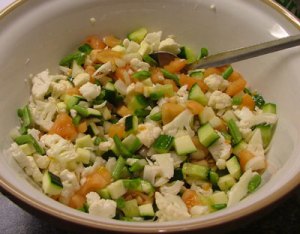
Add 3 medium cauliflowers broken into florets
1/2kg button onions in half
3 large cucumbers seeds removed cut into chunks
3 onions diced
1.5 litres of malt vinegar
275g castor sugar
2 cloves crushed garlic
1 teaspoon grated nutmeg
30g mustard powder
30g turmeric
15g ground ginger
½ teaspoon cayenne pepper
4 Dessert spoons corn flour
Method:
- Put the cauliflowers and onions in a bowl and pour over the liquid and leave to go cold. Cover the cucumbers with just enough liquid to cover them.
- Put the sugar, vinegar, garlic, nutmeg and onion into a pan, bring to the boil and cook for 3 min.
- Mix the mustard powder, turmeric, cayenne and ginger together with a little water to form a paste and whisk in.
- Put 4 dessert spoons of corn flour into a bowl and mix to a paste with a little water and then whisk in to the correct thickness, add ½ first and boil when the consistency is correct add the vegetables and cook for 1 min and cool
- Ladle into warm, sterilised jars with non-metallic or vinegar-proof lids, making sure there are no air gaps, before sealing and labelling.
- Store in a cool, dark place. Allow the flavours to mature for at least 1 month and refrigerate after opening. Unopened it will keep for 6 months

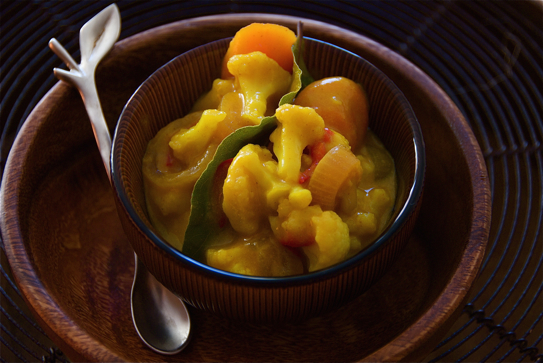
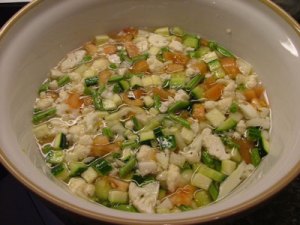
Thank Seo…
LikeLike
Thank you Brian…I’m happy you enjoyed the post.
LikeLike
Thanks Mark…
LikeLike
Hi, I do believe this is an excellent site. I stumbledupon it 😉 I may return yet again since I bookmarked it. Money and freedom is the greatest way to change, may you be rich and continue to help others.
LikeLike
Nice one Henry.
LikeLike
Cheers Henry!
LikeLike
Thanks Mark…press the follow button to keep up to date with the latest posts.
LikeLike
I’m glad you enjoyed it…cheers Jane.
LikeLike
Thanks Brian…
LikeLike
I dont usual comment, but that was an excellent post. cheers!
LikeLike
Thank you…follow me to receive latest posts.
LikeLike
Thank you Jacob.
LikeLike
Thanks Jacob…
LikeLike
The minute i see you have a new post i normally rush over here, though i haven’t posted a comment to say thanks til now, i love your posts. Thanks!
LikeLike
Wow! That genuinely hit the mark, and this comment would be to say thanks!
LikeLike
What an excellent post, changed my anti-commenting approaches. I will try and drop a comment here much more inside the future.
LikeLike
Wow you have done it again. Some excellent information here. You’ve made me break my comment embargo, cheers 🙂
LikeLike
I have been reading this blog for sometime now, however it has taken me a although to say hello. I wanna say thanks i really enjoy your posts
LikeLike
I always thought commenting was stupid, but for this blog i shall give it a go. Im loving it!
LikeLike
Thank you very much John. This is still a ‘work in progress’ and I still have a lot to learn. I would really value your feedback…no matter how harsh it is…I can take it…honestly!
LikeLike
A superb read, thank you. It really is obtaining harder and harder to sift through all of the garbage on the internet these days.
LikeLike
Though i dont usual like to comment, occasionally i know i need to. This is 1 of those times, cheers for your wonderful post.
LikeLike
Hey I just wanted to drop a line and say I really like your website. I have been searching at it for quite some time now and i thought it was about time i dropped a comment and said hello.
LikeLike
Honestly it is hard to locate a worthy blog worth commenting on nowadays, the internet is actually too flooded. Adore this post, love your blog. Just thought i would let you know!
LikeLike
Thank you very much…glad you really enjoyed it.
LikeLike
Can I just say what a relief to discover someone who genuinely knows what theyre talking about over a internet. You really know how to bring an issue to light and make it important. A lot more folks must read this and understand this side with the story. I cant feel youre not far more well-liked simply because you genuinely have the gift.
LikeLike
Thank you Grover…glad you enjoyed the post.
LikeLike
Fantastic write up. Keep up the superb performance.
LikeLike
Hi there there admin, I actually wished to firmly leave a quick observation to say that in fact I loved your particular piece of writing. Thanks!
LikeLike
Thanks for your comments.
LikeLike
What’s Happening i am new to this, I stumbled upon this I’ve found It absolutely helpful and it has helped me out loads. I hope to contribute & help other users like its helped me. Great job.
LikeLike
water damage Phoenix Hey this can be a real cool web site
Hey I discovered this web site to be actually attention-grabbing! Bookmarked!
I’m not in a position to see this web site properly on my phone 😦
I’m not in a position to view this web site properly on opera I believe there’s a drawback
I’m not in a position to view this web site properly on chrome I believe there’s a drawback
I’m not in a position to view this web site properly on firefox I believe there’s a drawback
I’m not in a position to view this web site properly on saffari I believe there’s a drawback
It had been some time since I visited web site with such high quality information. Thansk a lot for the useful data
There will not be many websites with data like this man! Bookmarked!
I am linking this webpage from my private weblog . this has all the usefull data necessary.
Hi. I wanted to drop you a fast word to express my thanks. Ive been following your weblog for a month or so and have picked up a ton of excellent data and enjoyed the tactic youve structured your site. I am making an attempt to run my very own weblog nonetheless I believe its too basic and I must give attention to loads of smaller topics. Being all things to all of us shouldn’t be all that its cracked up to be
Can I submit your submit to my wordpress weblog? I will add a inbound link to your forum. That’s one actually great post.
Hello! You some kind of knowledgeable? Great message. Are you able to tell me tips on how to subscribe your weblog?
Hey! I simply noticed one other message in one other weblog that appeared like this. How have you learnt all this stuff? That’s one cool post.
Can I submit your submit to my weblog? I will add a inbound link to your forum. That’s one actually candy post.
I’d like to visit your weblog extra typically however these days it seems to be taking without end to come back up. I visit from work, and our connection there may be pretty good. Do you think the problem could possibly be on your end?
My sis told me about your website and the way great it is. She’s right, I am actually impressed with the writing and slick design. It seems to me you’re simply scratching the surface when it comes to what you may accomplish, however you’re off to an excellent begin!
Hey! That’s a very great post. I’m very sure I will counsel it to my co-workers.For those who submit extra posts please e-mail them to me.
Hello! You some kind of pro? Great message. Are you able to tell me tips on how to subscribe your weblog?
Do you people have a fb fan web page? I appeared for one on twitter however could not discover one, I would love to grow to be a fan!
Thanks for an concept, you sparked at thought from a angle I hadn’t given thoguht to yet. Now lets see if I can do something with it.
For those who could e-mail me with just a few suggestions on simply how you made your weblog look this glorious, I might be grateful.
LikeLike
Good stuff….let us know how you geet on.
LikeLike
Nice recipe Rick, will be trying this one out over the weekend.
LikeLike
Cheeky boy…
LikeLike
Been in a few of them Ricky…
LikeLike